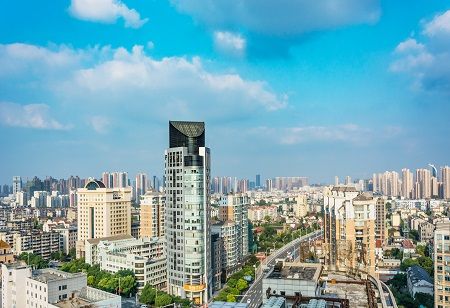
India’s retail real estate sector is on the brink of a major transformation. While the country’s Real Estate Investment Trust (REIT) ecosystem is still dominated by commercial office assets, the next wave of growth can come from retail malls, shopping centres, and mixed-use developments. Consolidation of quality retail assets, steady consumer spending, and rising urban incomes are driving this shift.
Data from ANAROCK Research estimates that the Indian retail REIT market can become a between Rs. 60,000 – Rs. 80,000 Crore market by 2030 - roughly 30-40 percent of India’s overall REIT market, which is projected to touch USD 25 billion (Rs. 2 lakh crore) by 2030.
Anuj Kejriwal, CEO & MD - ANAROCK Retail, says, "Currently, out of the five listed REITs in India, four are office-focused and only one - Nexus Select Trust - is retail-centric. However, with Grade A malls now maturing into stable, income-generating assets, 2-3 retail REITs are expected to launch over the next 3-5 years. Our estimate of the Indian retail REITs' potential to become a Rs. 60,000 – Rs. 80,000 crore market in the next five years assumes only partial listings of various institutional portfolios."
This vital new entry into India's REIT universe will mirror the path of mature economies, where retail REITs form 15 percent to 25 percent of total REIT market capitalization.
Also Read: Mindspace REIT Marks 5 Years with Strong Growth Plans
Hotspots Emerging Beyond the Metros
Tier-II cities such as Indore, Coimbatore, Surat, Bhubaneswar, and Chandigarh are witnessing the entry of institutional players for the first time, with mall developers like Phoenix Mills, Prestige Estates, and Nexus Malls expanding aggressively in these high-income, consumption-driven clusters.
New projects averaging 1-1.2 million sq. ft. are being planned, with entertainment, F&B, and lifestyle retail accounting for nearly half of new mall space.
Market Demand-Supply Dynamics
According to ANAROCK Retail’s RELEAP H1 2025 report, the first half of the current year saw 2.8 million sq. ft. of mall space deployed across the top 7 cities – 155 percent more than in 2024, when 1.1 million sq. ft. of supply was recorded. Net absorption in malls was approx. 2.0 Mn sq. ft. - almost 31 percent more than that in the previous year. The absorption was predominantly driven by the Apparel and F&B segments, which accounted for nearly 55 percent share of the total absorption.
These absorption trends in institutional assets reflect an evolution in Indian consumer preferences," says Anuj Kejriwal. "High-value consumption categories are being seen as gaining increasing traction - an important signal to mall developers and their tenant mix strategy going forward."
High Streets Vs. Malls - A Changing Rental Landscape
"Across major cities, high streets are showing consistent rental appreciation, reflecting sustained demand for prime retail locations with high footfall and visibility characteristics," says Kejriwal. "In contrast, mall rentals have largely remained stagnant in most cities, indicating a more cautious approach from retailers towards enclosed retail formats amid evolving market dynamics."
Also Read: Indian REITs Deliver 6-7% Yields, Surpassing Global Benchmarks
Outlook
The Indian organized mall sector is no longer chasing square footage and focusing on creating vibrant urban destinations instead.
Predictions for the Next 5 Years:
"Retail is no longer just an afterthought in Indian real estate portfolios," summarises Kejriwal. "It is now edging closer to centre-stage, under the spotlight as a resilient, high-yield asset class which is finally ready for institutional scale and public markets."
We use cookies to ensure you get the best experience on our website. Read more...
Copyright © 2025 HomesIndiaMagazine. All Rights Reserved.